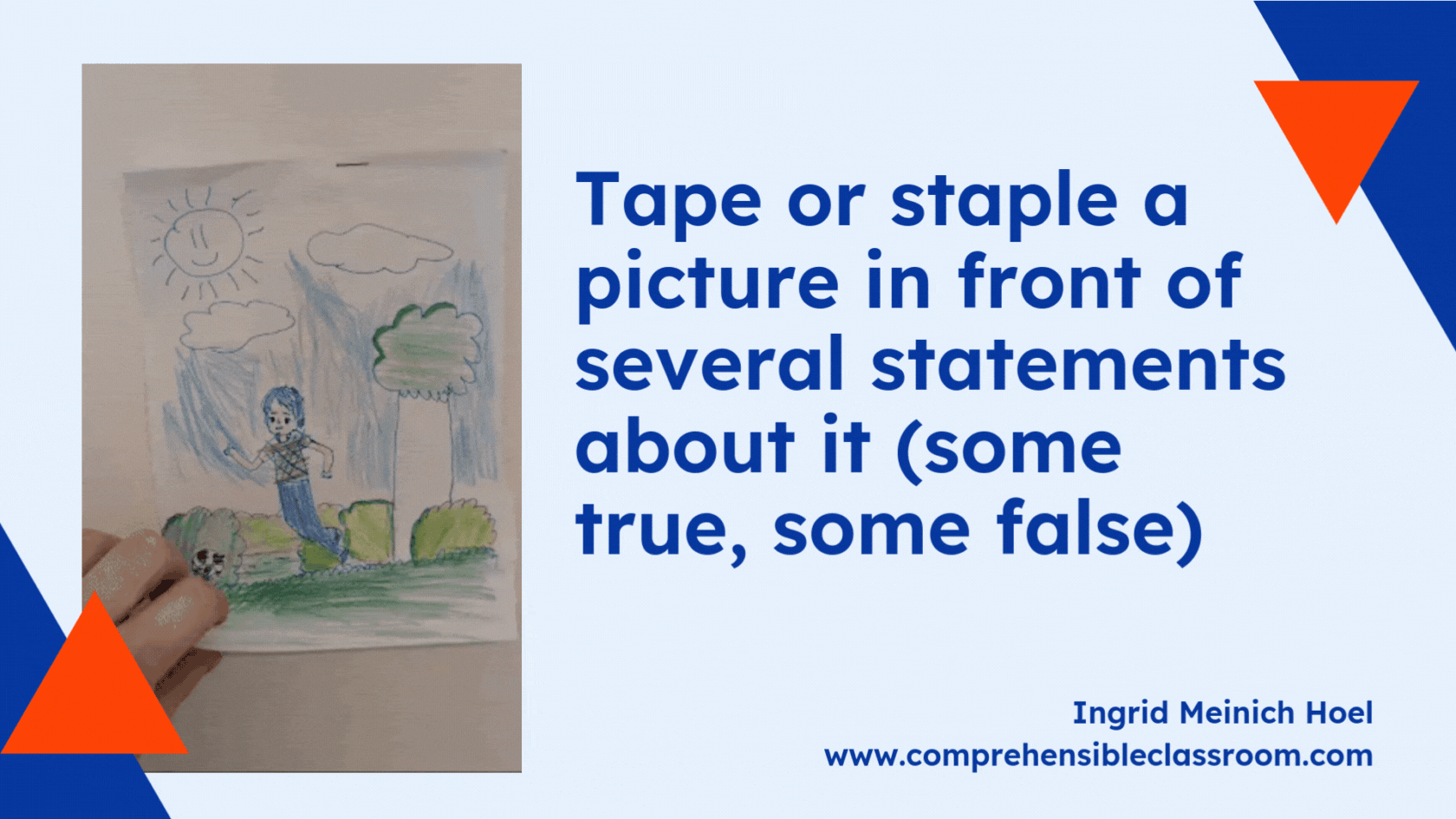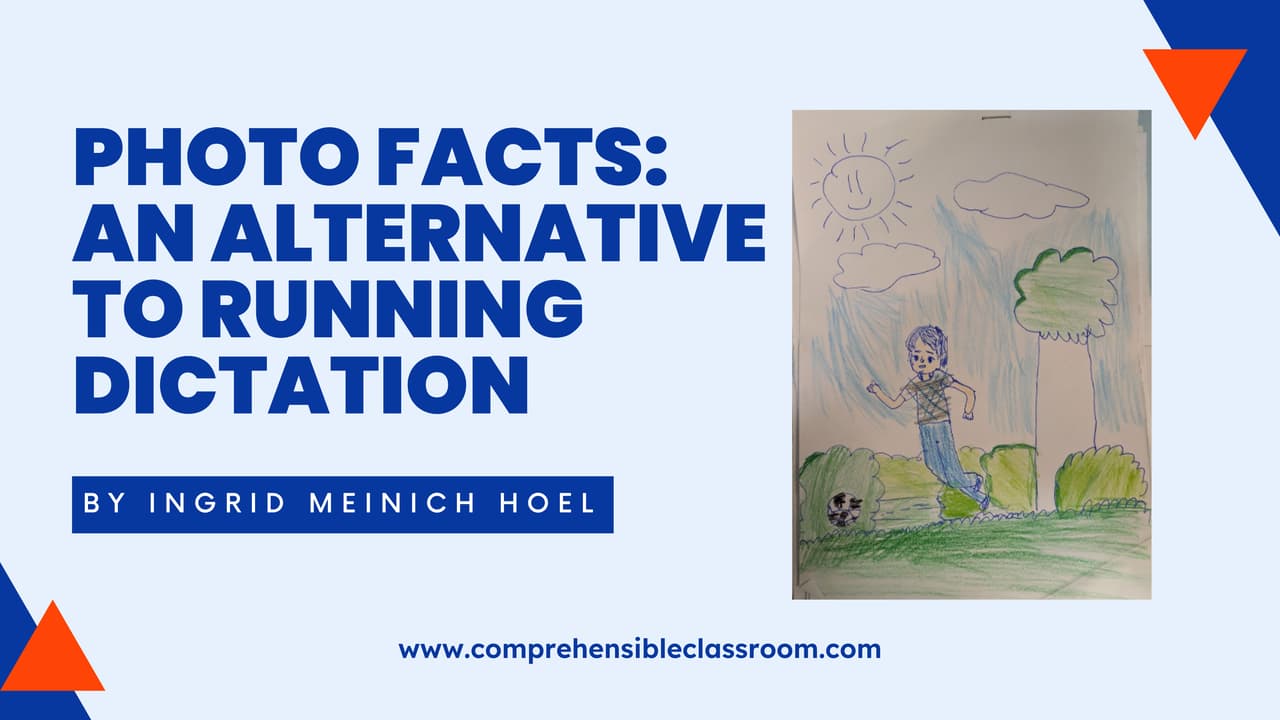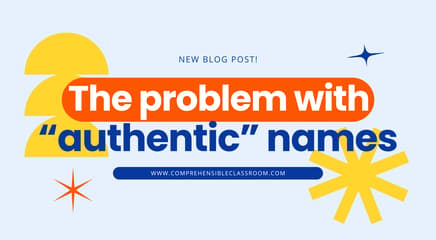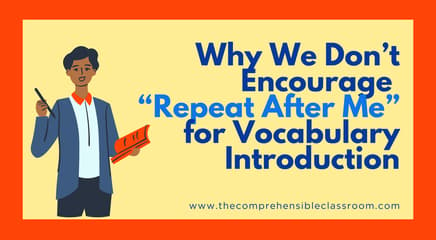Do you love running dictation and pencil grab, but need to change your routine a bit? Here’s an activity that combines the two, using images or illustrations as well! This activity is perfect for reviewing a story you have worked on, but can also be used for different content-based topics you have been covering with your class.
If you have not tried running dictation, you might want to check out this page!
Photo Facts: An Alternative to Running Dictation
by Ingrid Meinich Hoel
My beginner class and I were reading Cinderella in the target language, and at the end of the unit I wanted to do a fun activity to use all of the words and phrases we had learned, first thinking of Running Dictation. Throughout the unit we had also used True or False statements to focus on reading comprehension, for example through the activity Pencil Grab. Furthermore, the book we read had such nice pictures, and so I was thinking if I could combine all three of these into one awesome activity. That is how I came up with the idea of Photo Facts.
How it works
Sets of multiple true or false statements are hung up in the classroom, with an image, a photo or an illustration in front of them. The image is stapled to or taped on top of the true/false statement papers so that students can flip up the image to reveal the statements. Students work in pairs to find the correct statements linked to the photo, and then have to write the statements down accurately in their books.

How to prepare
The first thing you need to do is choose which photos or images you would like to use. You can use images from the book or story you have read, or images of the content you have been teaching. You could also have the students illustrate sections of a story.

The second thing you will need to do is to write your statements, or choose sentences from your text. This can be done as simply or as complicated as needed, depending on the level of your students. I did this activity with my beginners and created the following statements accompanying an illustration of a boy playing football in the garden:
- Henrik is playing handball.
- Henrik is playing football.
- Henrik is in the garden.
- Henrik is in his room.
In my example, two statements are true, and two statements are false. You could use only two statements (one true, one false) or three statements (one true, two false).
Preparing your Photo Facts Activity
- Choose pictures from your story, or have your students illustrate parts of the story
- Write a set of statements per picture. If you want to try the activity exactly as I did it, two should be false statements and two should be true statements.
- Attach the picture to the statements, so that the statements are behind the picture and students can flip up the image to see the statements.
- Hang the pictures with the statements around the classroom or at one end of the classroom, depending on your layout.

Doing the Photo Facts Activity in class
First, students go into pairs. One student is seated and will be writing. The other student is the runner.
The runner runs to one of the pictures. They look at the picture, and then lift it to reveal the statements underneath. They have to read all four statements, and decide which of them are true in relation to the picture.

Next, the runner runs back to the writer, and tells them only the two true statements. The writer writes the statements down. The runner can spell, and run back and forth, but they cannot write themselves.

I like to have the partners swap roles half way through, so that they both get to be runners and writers. Alternatively, you could have them swap roles after each poster.
Lesson example: where does Photo Facts fit in?
Here’s an example of a lesson plan using this activity.
- Storytelling. I read the text for the students, using some acting and drawing on the board whilst telling the story.
- Students then read through the story in pairs, and do Ping Pong Recall together to make sure they understand the text.
- Students are divided into pairs and given a section of the text to illustrate on an A4 paper.
- Whilst the students are drawing, I quickly write some simple true or false statements to pair with their illustrations on A4 papers as well.
- Students hand in their drawings and I combine them with the statements I wrote, and hang them up around the classroom.
- Students do the activity Photo Facts in pairs.
Switch up your routine with Photo Facts
Photo Facts is a practical option to consider when you want to review content in a way that encourages movement, critical thinking, and creativity, if you use student-generated artwork. It doesn’t require much prep and can be adapted to many different kinds of texts or topics.
It doesn’t require much prep and can be adapted to many different kinds of texts or topics.
Whether you’re reviewing a story or reinforcing content knowledge, it’s a flexible activity that adds variety to your classroom while keeping the focus on comprehension.
About the author:
Ingrid Meinich Hoel is a teacher of English and Norwegian Acquisition in Norway. She has a MA in Literacy Studies from the University of Stavanger and is currently employed at The British International School of Stavanger. After a conference with Dynamic Language Learning in the Netherlands in 2022, she threw herself into CI-ifying her classes. She loves Disney, being a mom to two daughters, and acquisition-driven instruction.




